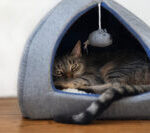Longhaired cats are celebrated for their stunning and graceful appearance, often evoking images of elegance and majesty. These breeds, characterized by their flowing manes, fluffy tails, ear tufts, and toe tufts, present a captivating variety in size, color, and temperament. Contrary to popular belief, not all longhaired cats demand excessive grooming, making them surprisingly adaptable companions.
Here’s an exploration of some of the most beloved and distinctive longhaired cat breeds that might just capture your heart.
Discovering the Charm of Longhaired Cat Breeds
1. Persian: The Epitome of Fluff
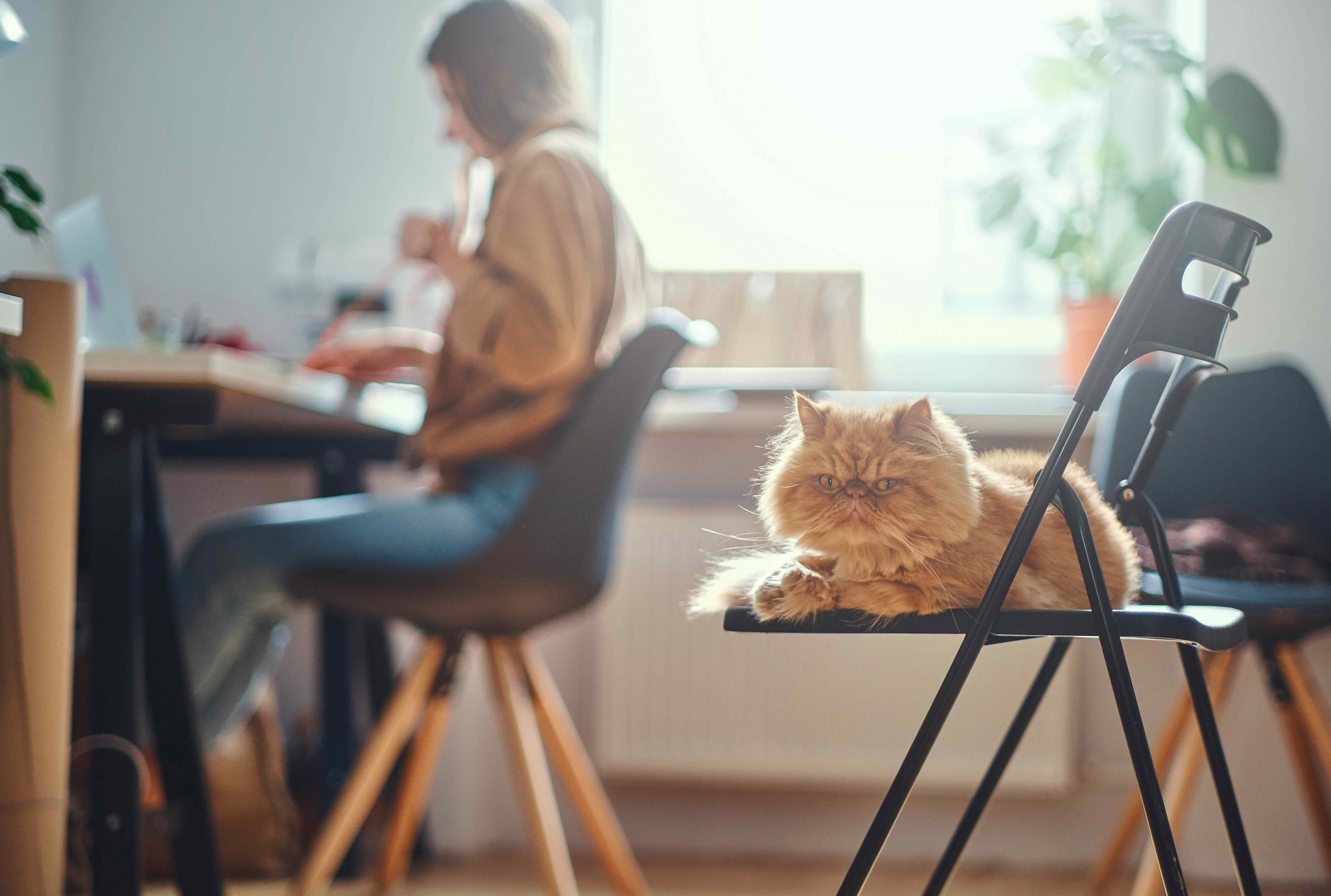 A serene red Persian cat lounges on a chair, with a woman working at a desk subtly in the background.
A serene red Persian cat lounges on a chair, with a woman working at a desk subtly in the background.
The Persian cat, recognized for its signature flat face and lavish, flowing coat, stands out as one of the most long-haired breeds. These felines are known for their gentle and calm nature, thriving in peaceful home environments. Persians typically form strong bonds with their families but may exhibit a reserved demeanor around unfamiliar individuals.
Persians boast a diverse palette of coat colors, from classic black and red to delicate cream. Unique shades like blue and lilac offer sophisticated options for those seeking a gray longhaired cat. Maintaining the Persian’s magnificent coat requires daily grooming to prevent mats and keep their face clean and debris-free, a small price for their majestic presence.
2. Himalayan: A Pointed Beauty
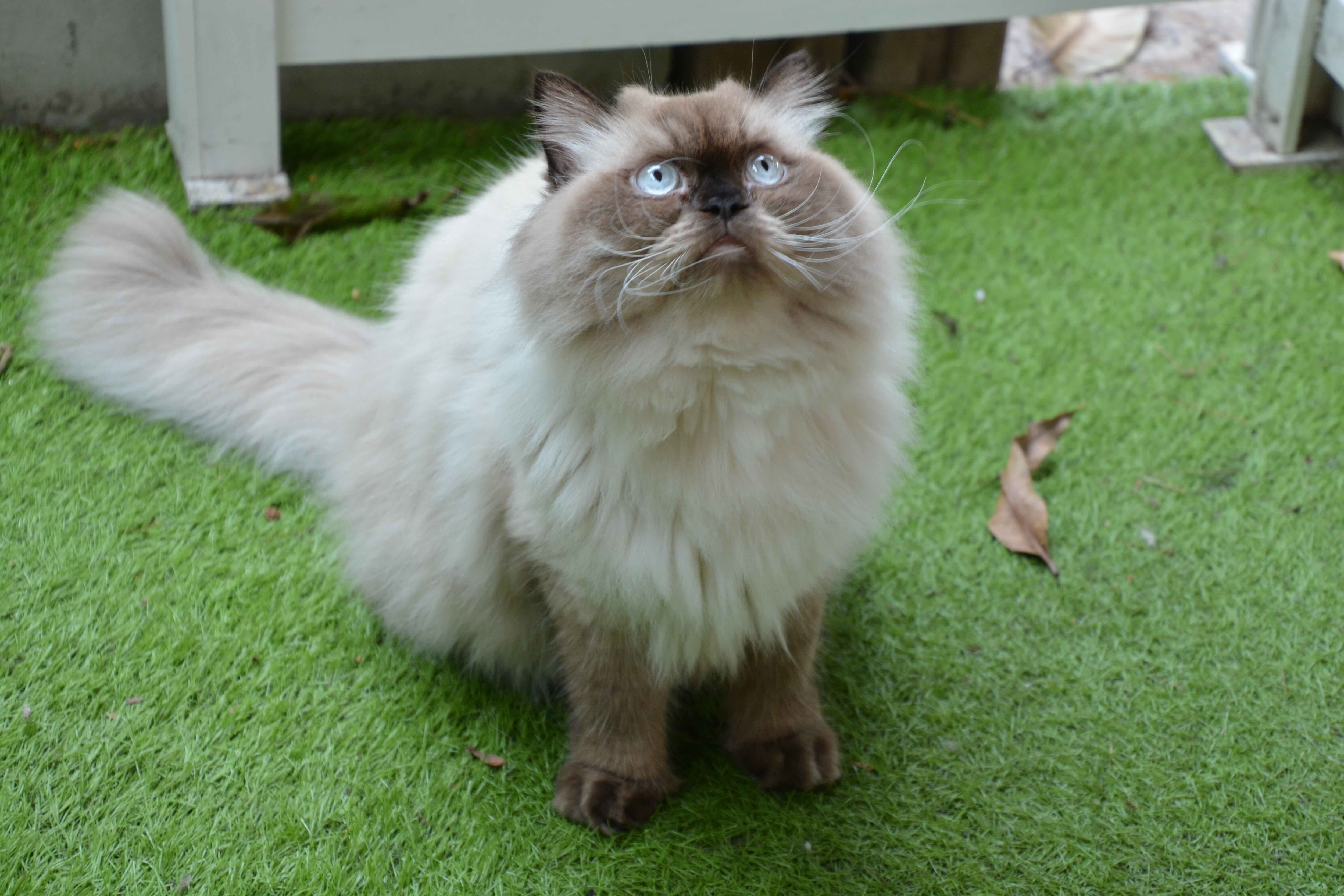 A silver colorpoint Himalayan cat sits gracefully in green grass, gazing upwards with gentle curiosity.
A silver colorpoint Himalayan cat sits gracefully in green grass, gazing upwards with gentle curiosity.
The Himalayan emerges as a delightful blend of Persian serenity and Siamese playfulness. This longhaired cat breed is easily identified by its distinctive points—darker shading on the ears, face, paws, and tail—contrasting beautifully with their creamy body coat.
Himalayan points come in a spectrum of colors, including seal (a black base with gold, red, or brown undertones), blue, lilac, chocolate, and flame (a vibrant red-orange). These points can present as solid colors or intricate patterns. The Himalayan’s coat texture varies from fine to woolly, but consistent daily brushing remains crucial to keep it in prime condition.
3. LaPerm: Naturally Curly Elegance
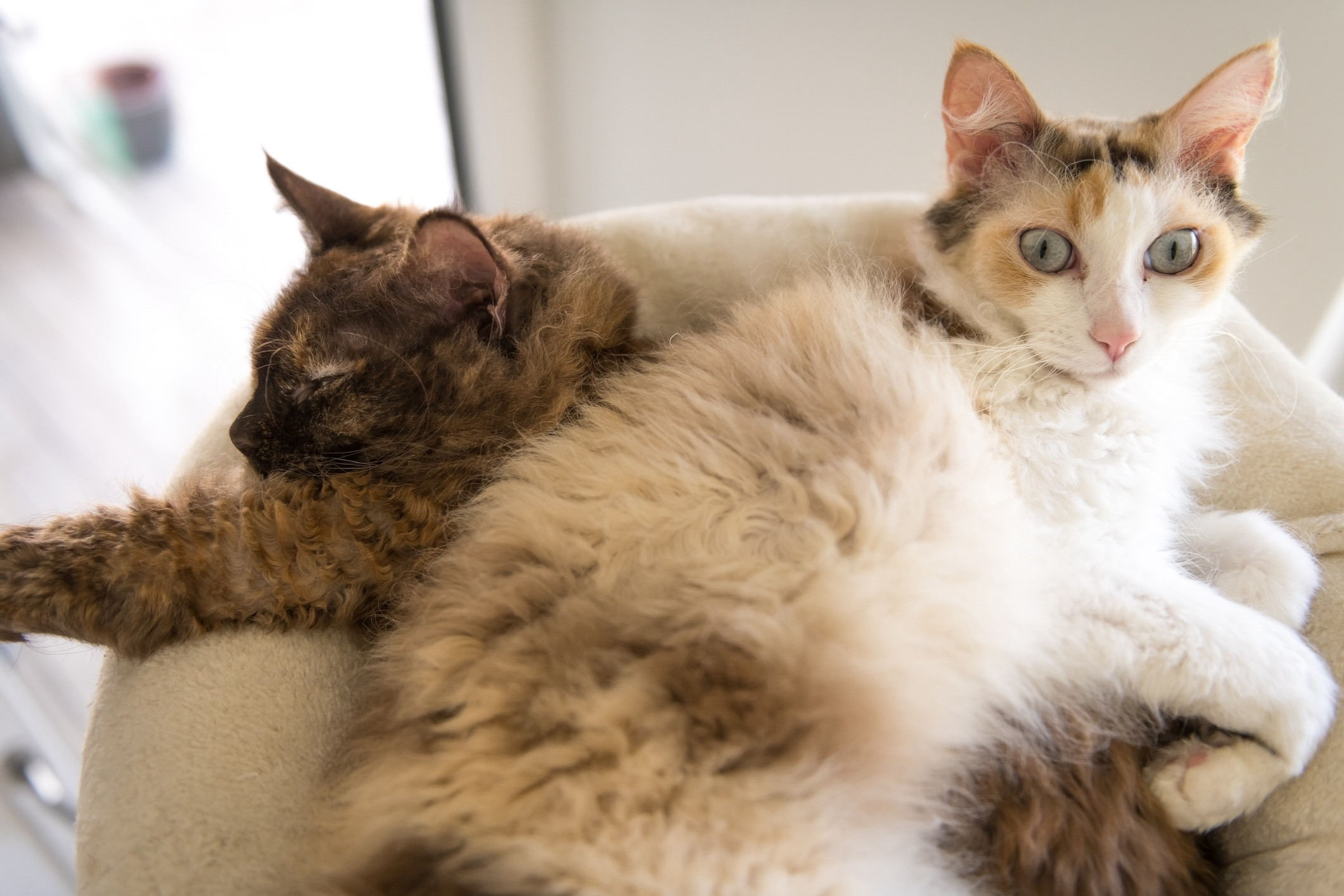 Two LaPerm cats curl up together comfortably inside a cat tree, showcasing their unique coats.
Two LaPerm cats curl up together comfortably inside a cat tree, showcasing their unique coats.
Among the most unique longhaired cat breeds is the LaPerm, celebrated for its naturally curly coat. This distinctive feature arises from a spontaneous genetic mutation, resulting in a coat that can be either long or short.
The longhaired LaPerm showcases a medium to long coat, which can range from soft curls to gentle waves, characterized by a springy and airy feel, as detailed in the Cat Fanciers’ Association (CFA) breed standards. Despite their luxurious long fur, LaPerms are surprisingly low-shedding and are known for their affectionate and energetic personalities, making them wonderful companions for active homes.
4. Maine Coon: The Gentle Giant
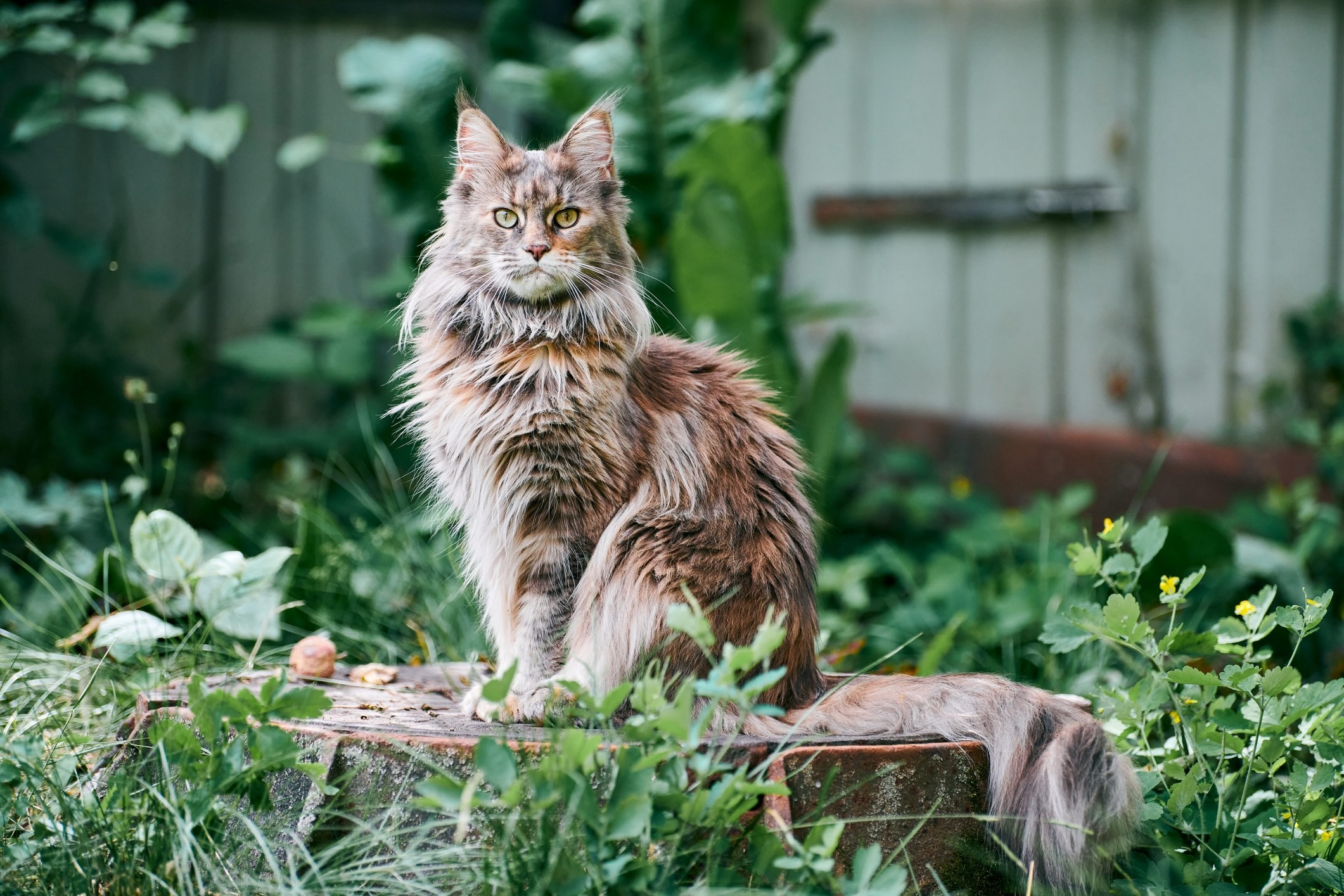 A majestic brown and orange Maine Coon tabby sits regally in a lush garden setting.
A majestic brown and orange Maine Coon tabby sits regally in a lush garden setting.
The Maine Coon, with its impressive size, long flowing coat, and prominent whiskers, is a striking longhaired cat breed. Renowned for their affectionate and intelligent nature, Maine Coons often display traits reminiscent of dogs, making them exceptionally interactive family pets.
As one of the largest longhaired cat breeds, a fully grown Maine Coon can weigh up to 25 pounds. Their dense, double coat requires brushing several times a week to prevent tangles and maintain its magnificent appearance. Their amiable disposition makes grooming sessions a pleasant bonding experience.
5. Norwegian Forest Cat: A Rugged Beauty
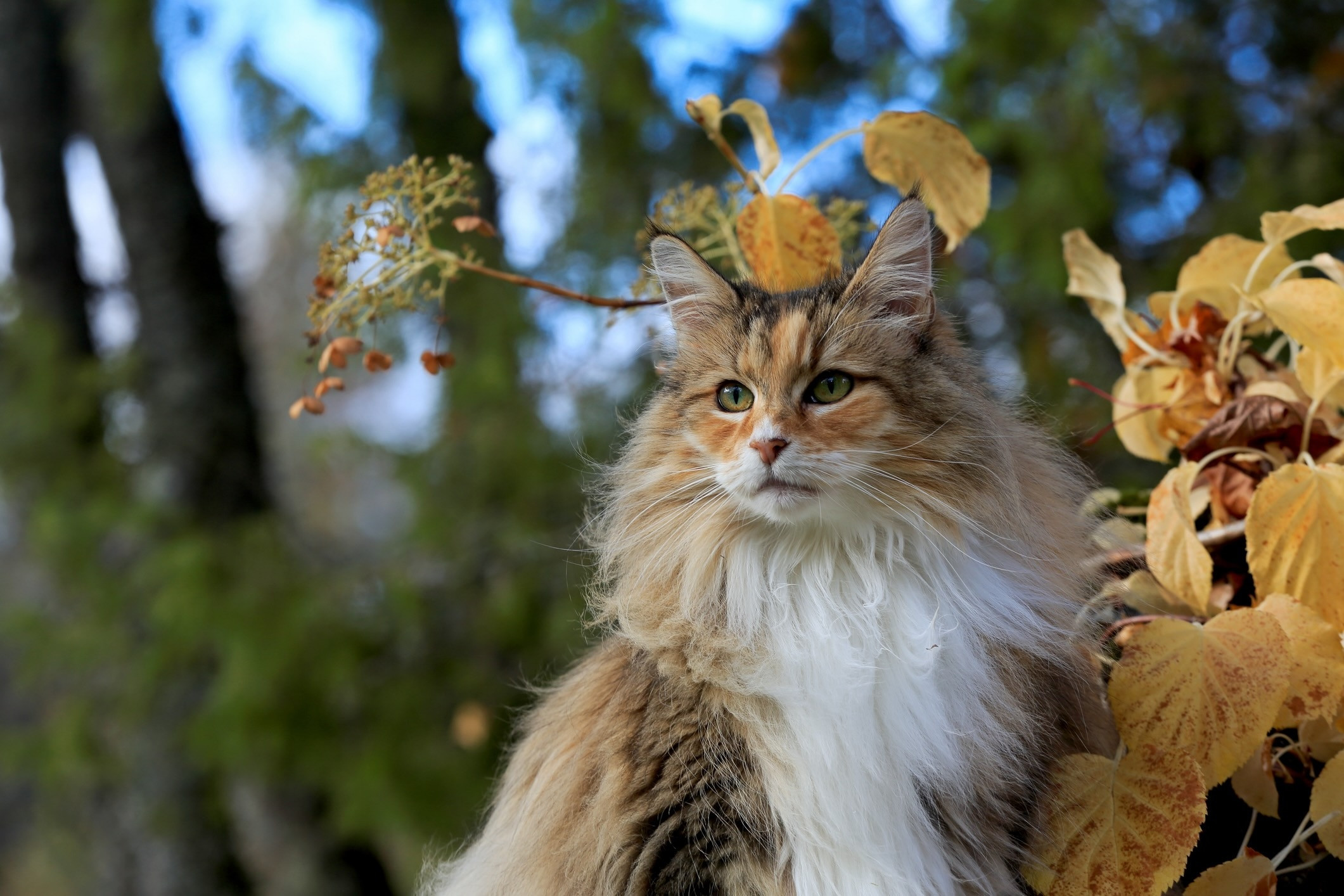 A close-up of a white, brown, and orange Norwegian Forest Cat, captured in an outdoor setting.
A close-up of a white, brown, and orange Norwegian Forest Cat, captured in an outdoor setting.
Another large and longhaired cat breed is the Norwegian Forest Cat. Developed to withstand the harsh winters of Scandinavia, these cats possess a thick, water-resistant coat that requires regular brushing, ideally several times per week.
Norwegian Forest Cats undergo significant shedding twice a year as they lose their winter coats. During these periods, more frequent brushing is necessary to manage the shedding fur. Their sociable and loving temperament makes grooming a welcome part of their interaction with their human families.
6. Ragdoll: The Gentle Lap Cat
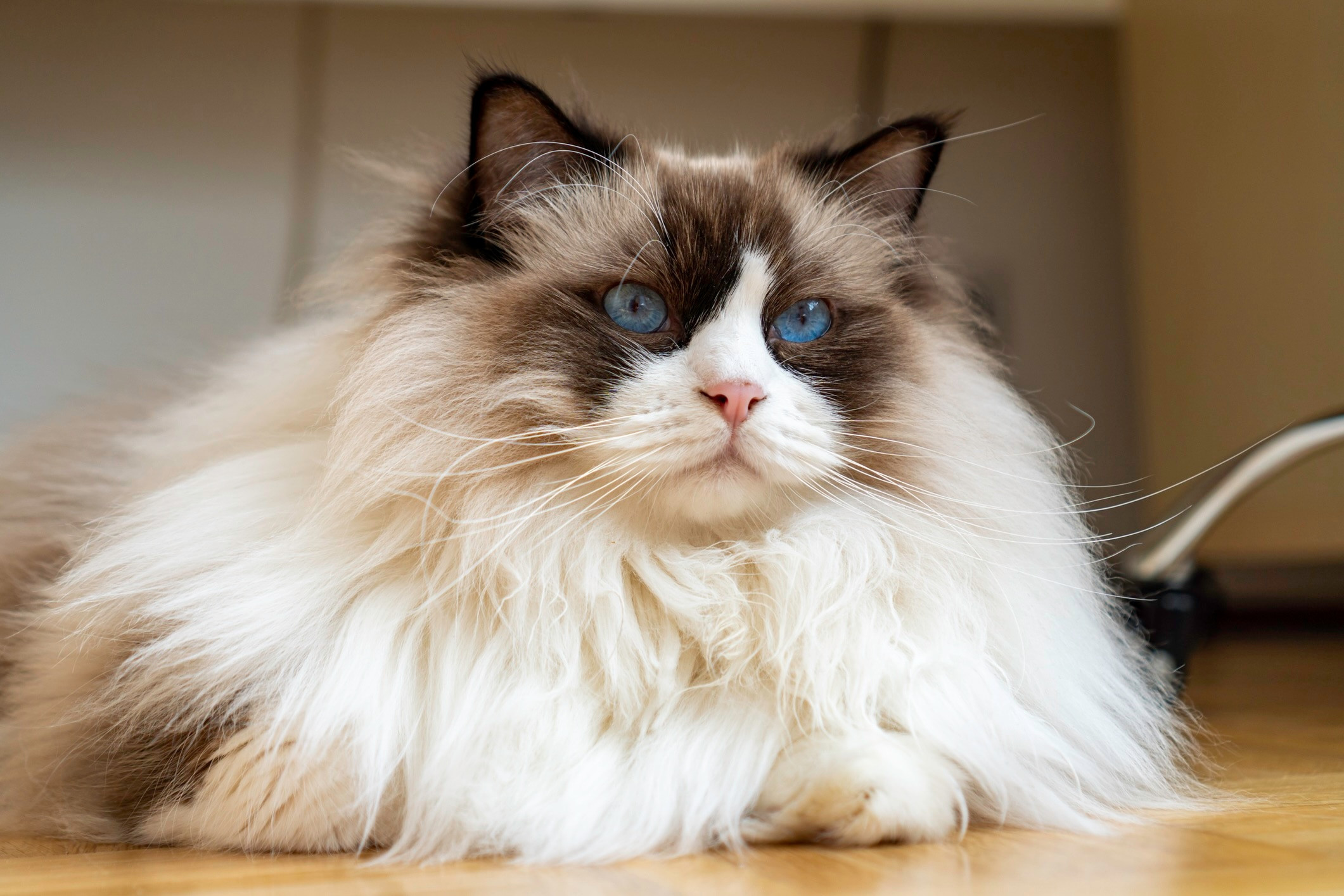 A close-up shot of a relaxed longhaired Ragdoll cat lying comfortably on the floor.
A close-up shot of a relaxed longhaired Ragdoll cat lying comfortably on the floor.
The Ragdoll is a fluffy breed famed for its exceptionally docile nature, often becoming limp when held or petted, embodying their name.
Ragdolls are celebrated as one of the friendliest cat breeds, thriving on companionship and best suited to homes where they have company, be it other pets or regularly present humans. Despite their luxurious long coat, Ragdolls have relatively simple grooming needs, typically requiring brushing just once or twice a week to stay healthy and happy.
7. RagaMuffin: Sweetness and Softness Combined
The RagaMuffin, a close relative of the Ragdoll, is known for its affectionate disposition and strong bonds with family members. This longhaired cat breed features a plush, silky coat with a distinctive ruff around the neck and slightly longer fur on the belly, adding to their cuddly appeal.
Despite its opulent look, the RagaMuffin’s coat is surprisingly easy to care for. Weekly grooming with a comb is generally sufficient to keep their coat in excellent condition, making them a delightful, low-maintenance longhaired companion.
8. Siberian: The Hypoallergenic Fluffy Friend
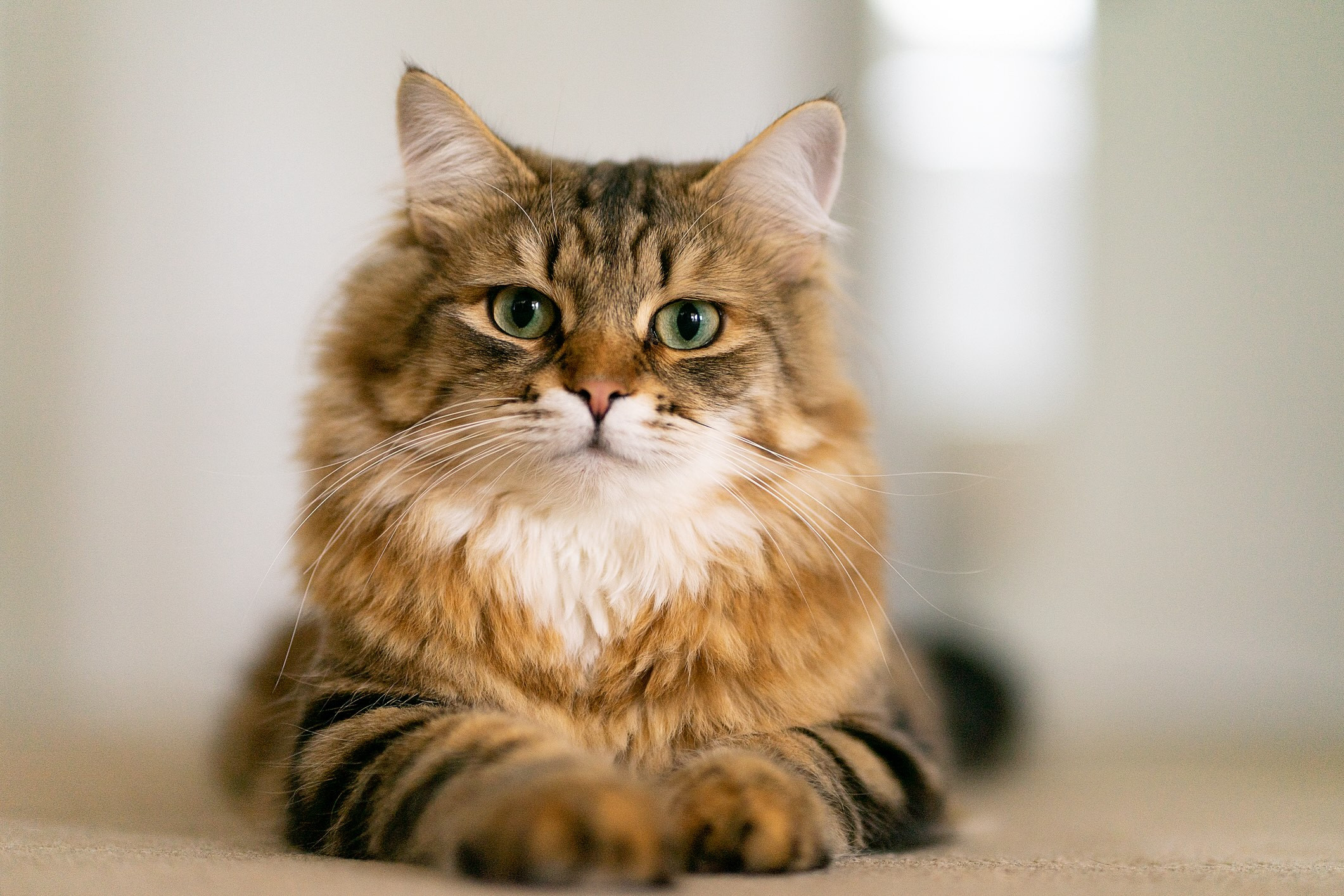 A brown tabby longhaired Siberian cat lies down, looking directly at the camera with gentle eyes.
A brown tabby longhaired Siberian cat lies down, looking directly at the camera with gentle eyes.
The Siberian cat distinguishes itself with a unique triple coat consisting of guard hair, awn hair, and a dense undercoat, offering superior protection against cold climates. While this may sound like intensive grooming, Siberians only need weekly brushing for most of the year.
However, during shedding seasons in spring and fall, brushing frequency should increase, potentially to daily, to manage the molting undercoat. Siberians are renowned for their friendly and affectionate nature, often seeking lap time and engaging in playful interactions. They are also recognized for being intelligent and trainable, adding to their appeal as family pets.
9. Selkirk Rex: Curly Coated Charm
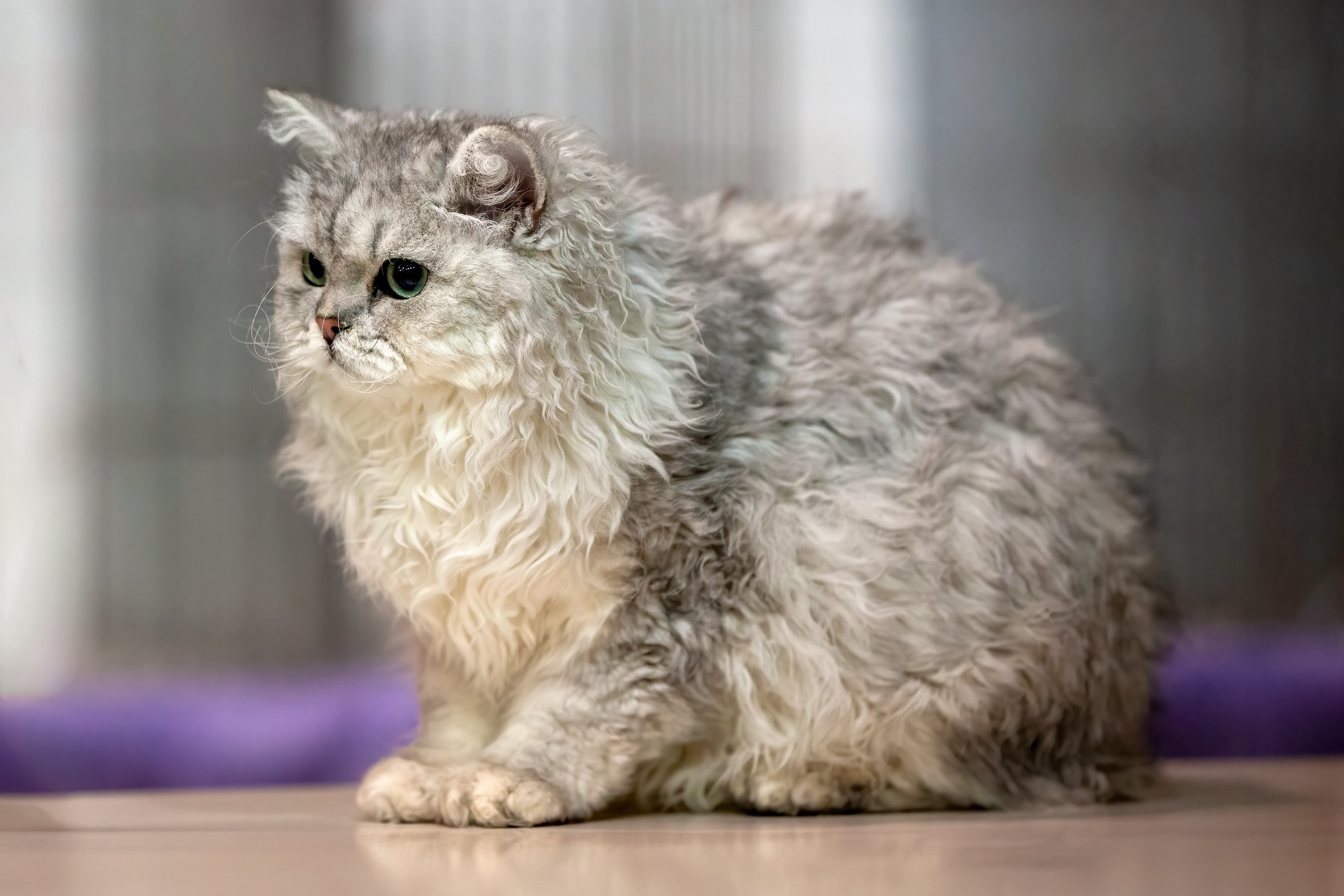 A curly-haired Selkirk Rex sits elegantly on the floor, showcasing its unique coat texture.
A curly-haired Selkirk Rex sits elegantly on the floor, showcasing its unique coat texture.
The Selkirk Rex boasts a distinctive curly coat, a result of a genetic mutation, combined with the long, fluffy fur inherited from its Persian ancestry. Unlike many long-fur cat breeds, the Selkirk Rex should not be over-brushed, as this can cause frizzing and disrupt their natural curl pattern.
These fluffy cats can develop oily skin and benefit from semi-regular baths. Establishing a grooming routine, including both brushing and bathing, early in their life helps ensure they adapt well to these practices, keeping their unique coat in top condition.
10. American Bobtail: The Shaggy Playmate
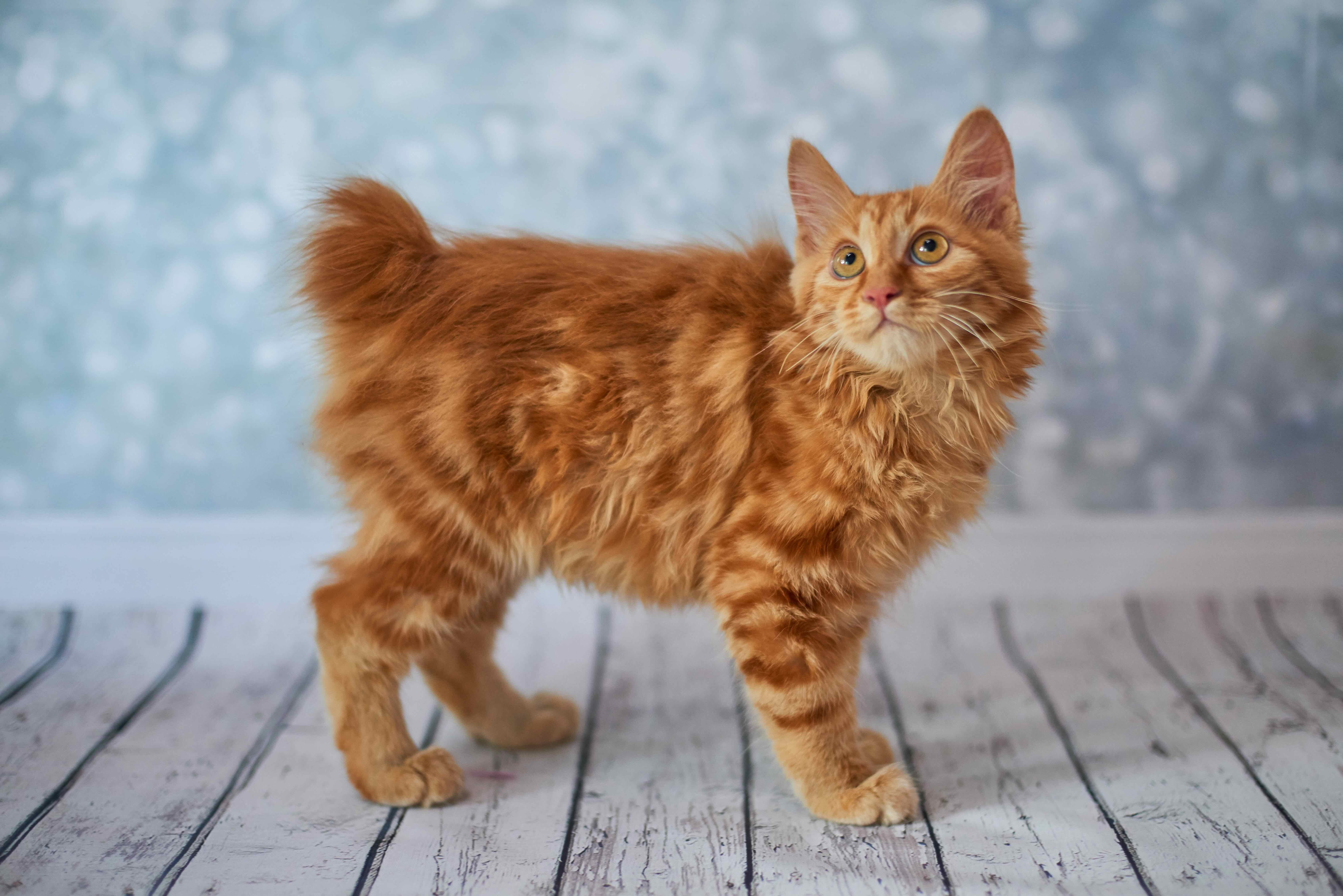 A fluffy red American Bobtail kitten poses charmingly for the camera.
A fluffy red American Bobtail kitten poses charmingly for the camera.
The American Bobtail is characterized by its shaggy, medium-long coat and a notably short tail, which can range from just an inch in length.
According to The International Cat Association (TICA) breed standards, American Bobtails can exhibit any coat color, offering a wide variety from fluffy brown cats to longhaired orange cats. This medium-sized cat breed is known for being adaptable and affectionate, with a playful side that includes learning tricks and enjoying interactive games, making them engaging family pets.
11. Birman: Sapphire Eyes and Silky Coat
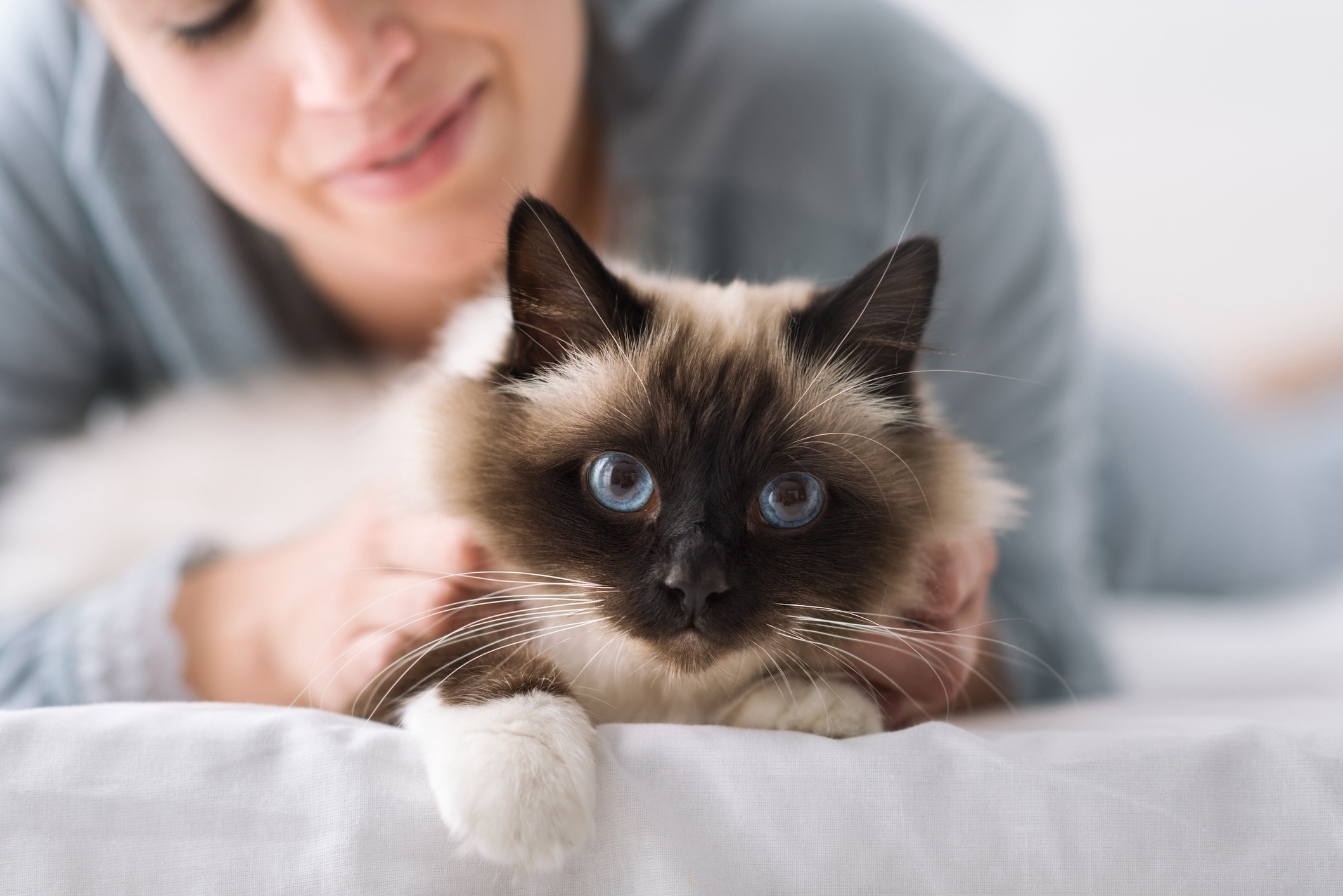 A woman gently pets a longhaired Birman cat on a bed, while the cat looks directly at the camera.
A woman gently pets a longhaired Birman cat on a bed, while the cat looks directly at the camera.
The Birman captivates with its striking blue eyes and a predominantly white or cream coat accented by colored points on the face, tail, and legs. This longhaired cat breed is visually stunning and known for its gentle temperament.
Good news for those concerned about grooming: the Birman’s long, silky coat is less prone to tangling and matting compared to some other fluffy breeds. Nonetheless, brushing a Birman a few times a week helps minimize shedding and reduce the likelihood of hairballs, contributing to their overall health and comfort.
12. Japanese Bobtail: Bouncing and Bodacious
The longhaired Japanese Bobtail is distinguished by a tail that is no longer than 3 inches and a medium to long, silky coat without a heavy undercoat. This breed’s smooth, fine coat is manageable with regular weekly brushing.
Japanese Bobtails come in a wide array of colors, including solids, bi-colors, and tri-colors, offering aesthetic diversity. Known for being highly interactive, the Japanese Bobtail often vocalizes to get attention and readily befriends new people, making them a sociable and engaging companion.
13. Pixiebob: The Wild Look-Alike
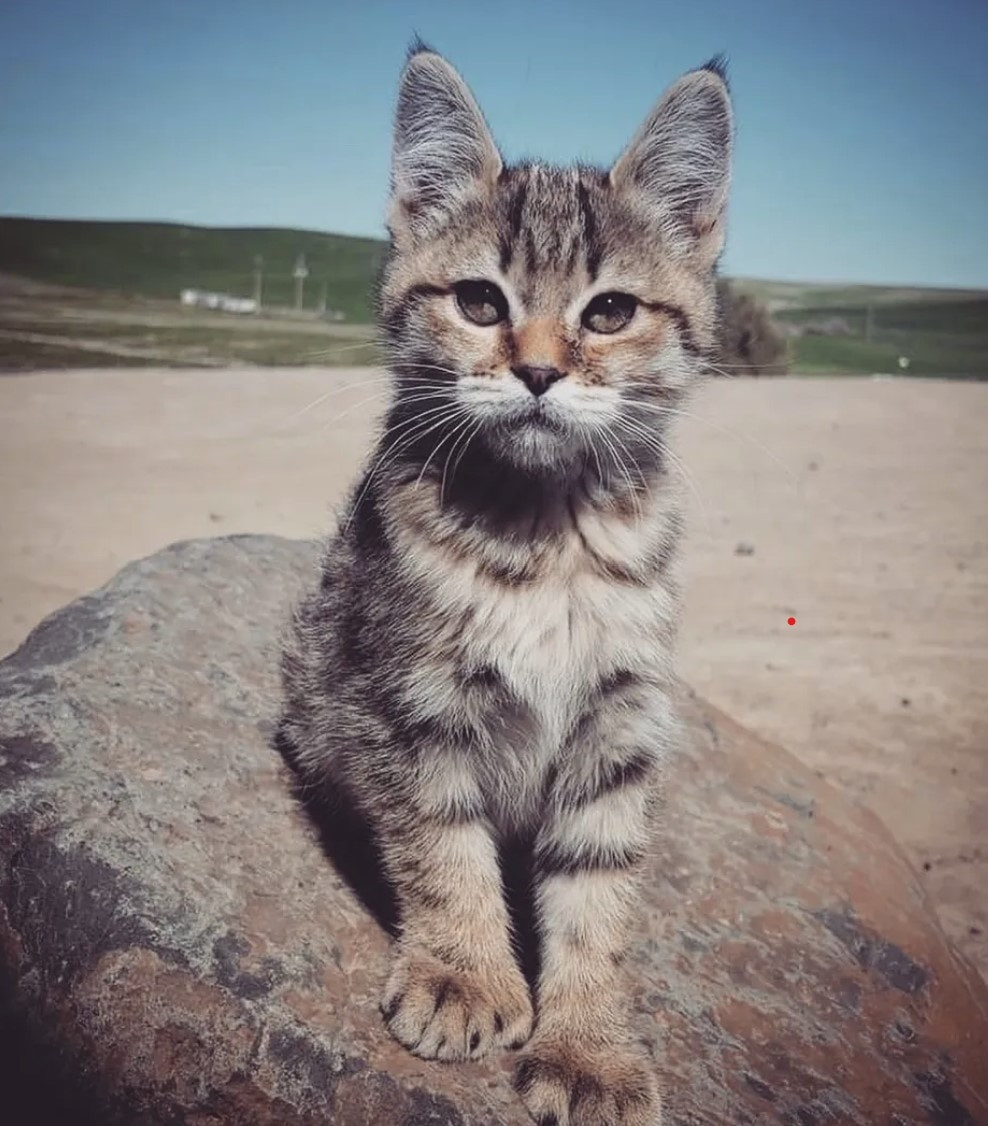 A Pixiebob kitten with extra toes sits and looks inquisitively at the camera.
A Pixiebob kitten with extra toes sits and looks inquisitively at the camera.
The Pixiebob is bred to resemble the wild North American bobcat, featuring a robust build and distinctive facial features. Breed standards recognize both shorthaired and longhaired Pixiebobs, both characterized by full and bushy facial hair.
Longhaired Pixiebobs have a soft coat, approximately 2 inches in length, that lies close to the body. Despite their wild appearance, Pixiebobs are known for their relaxed and friendly personalities, making them excellent domestic cats that bring a touch of the wild into the home.
14. Turkish Angora: Silky Sophistication
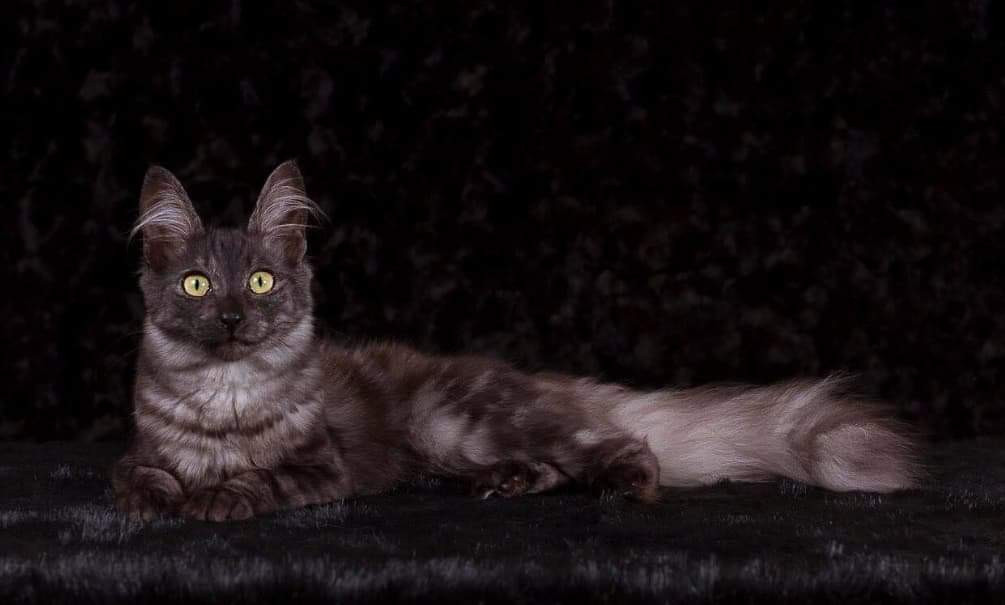 A sleek black Turkish Angora lies down against a stark black backdrop, emphasizing its elegant lines.
A sleek black Turkish Angora lies down against a stark black backdrop, emphasizing its elegant lines.
The Turkish Angora is admired for its smooth, silky coat that is both beautiful and easy to maintain. Lacking a dense undercoat, matting is less of a concern, although regular brushing a few times a week is still recommended to keep their coat in optimal condition.
While not overly cuddly compared to some longhaired breeds, Turkish Angoras are known for enjoying active play with humans and other pets. They are also quite vocal, often expressing themselves and their needs through sound, adding to their interactive nature.
15. Turkish Van: The Swimming Cat
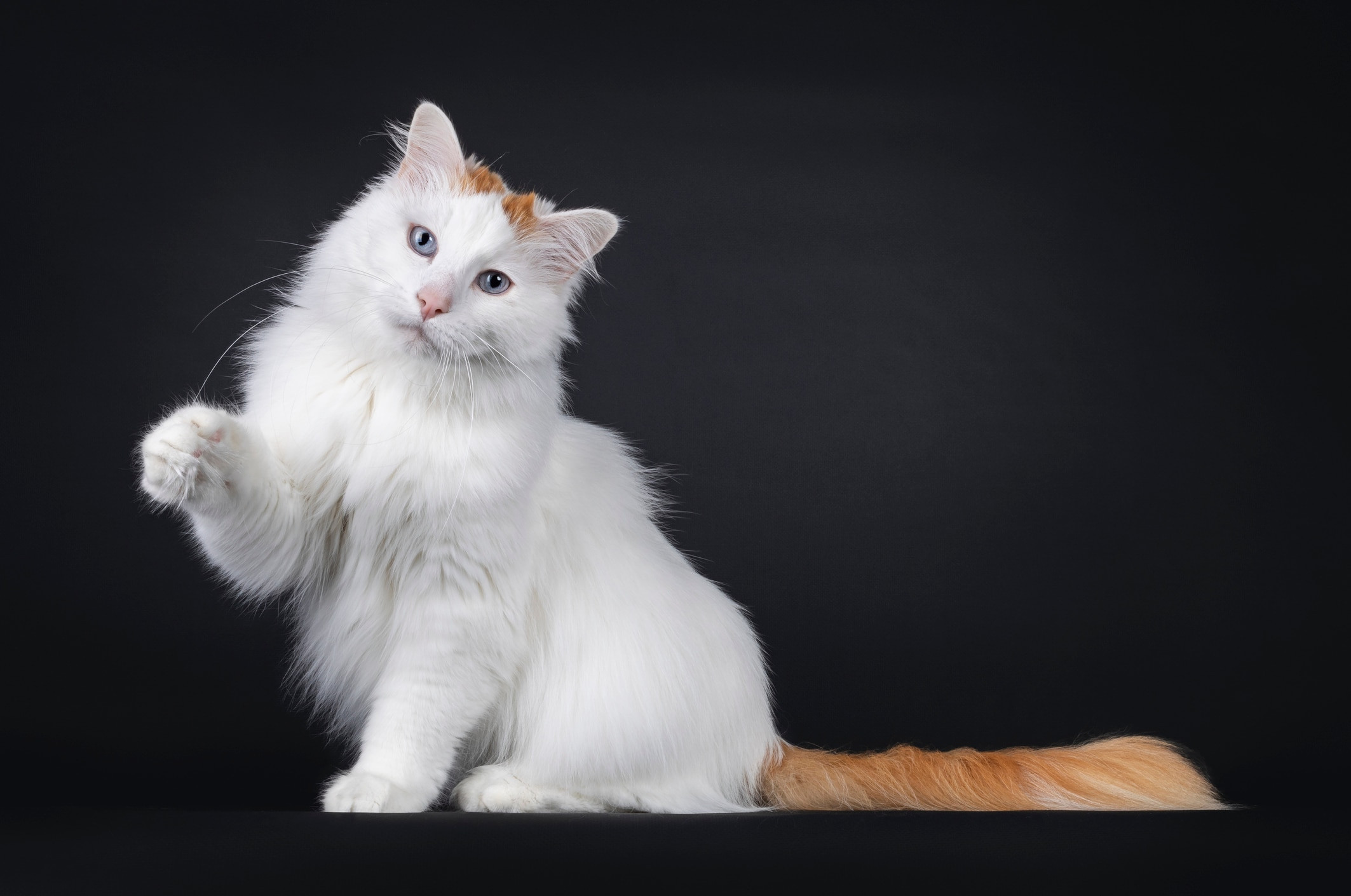 A white and orange Turkish Van cat is positioned against a black background, highlighting its distinctive color pattern.
A white and orange Turkish Van cat is positioned against a black background, highlighting its distinctive color pattern.
The Turkish Van is another low-maintenance longhaired cat breed, notable for its unique coat development. Born with a short coat, it gradually develops into a longer coat by the time they are 3 to 5 years old.
Interestingly, the Turkish Van’s coat adapts to the seasons, becoming shorter in the summer and thicker and longer in the winter. Year-round, however, they sport a full, bushy tail and charming ear tufts. Known for their love of water, the Turkish Van stands out as a playful and somewhat independent longhaired breed.
Essential Care for Longhaired Cat Breeds
Generally, the care for longhaired cats mirrors that of any cat—encompassing proper nutrition, mental stimulation, and essential provisions like a litter box and engaging toys. However, longhaired cat breeds typically require more attention to grooming.
Regular brushing and routine nail trimming are paramount for longhaired cats. Investing in a quality comb and brush is essential for removing loose fur, reducing dander, and maintaining a smooth, healthy coat.
Learning effective brushing techniques and creating a positive grooming experience by offering affection and treats during sessions is crucial. However, it’s important to avoid over-brushing, which can lead to frizzy or damaged hair.
For stubborn mats that are difficult to remove, seeking professional grooming services is advisable. In fact, regular visits to a groomer can be particularly beneficial for very fluffy breeds like Persians or Siberians. Professional groomers can provide thorough brushing, trims, and advice on maintaining your longhaired cat’s luxurious coat, ensuring they always look and feel their best.

